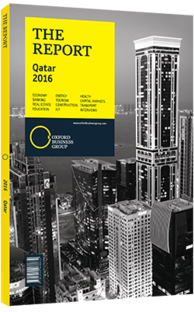Abdulla bin Abdulaziz bin Turki Al Subaie, Managing Director and Chairman of the Executive Committee, Qatar Rail: Interview

Interview: Abdulla bin Abdulaziz bin Turki Al Subaie
Can you assess the overall progress for the construction of the Doha Metro to date?
ABDULLA BIN ABDULAZIZ BIN TURKI AL SUBAIE: The construction of the Doha Metro is currently operating at full capacity with over 32,000 workers at present. As of the beginning of June 2016, we have dug over 100 km of tunnels out of the total 111 km. We anticipate finishing the remainder by the last quarter of 2016. 100% of the tunnels for the Lusail Light Rail Transit (LRT) have been completed. In 2016 we will be awarding the mechanical engineering and plumbing contracts, as well as the architectural subcontracts, to complete the fit-out for all of the 37 metro stations for phase one. The full-scale mock-up for the metro trains and LRT trams will arrive in Doha for the first time in 2016, so we are on track.
We also studied other similar rail projects and tried to incorporate the lessons learned from different major projects in Qatar to avoid delays from certain risks that may arise. On the programme delivery side, we are working according to the original time schedule. The contract also includes a bonus clause for contractors for the early completion of milestones; we are the first major project in Qatar to incentivise construction in this way. So we are still on schedule to open the first three lines of phase one of the Doha Metro and the Lusail LRT by the end of 2020.
How will the long-distance portion fit within the GCC rail network, and in what ways will Qatar directly benefit from this project’s completion?
AL SUBAIE: This is an opportunity to create a safe and efficient passenger network for Qatar and the wider region, and at the same time increase trade by linking regional ports via a rail network. Trade between GCC countries is currently growing at 5% per annum, and the added infrastructure will boost this figure further. It will also remove substantial traffic from the road network, with each train estimated to carry the same amount of goods as 300-400 trucks. This has numerous benefits and will improve overall safety on the roads, reduce government expenditures on road maintenance and lower overall emissions in the country. The network is also expected to reduce congestion at border crossings as freight trains will have an origin-to-destination Customs agreement so trains do not stop at each border crossing. The development of the long-distance rail system in Qatar is part of the overall GCC rail network development, which we are coordinating with now, and this is due to be completed by the third quarter of 2019. At present we have the ability to start construction of phase one of the long-distance portion in 2016 and expect these tenders to be released during the coming year.
What expectations do you have on passenger numbers for the rail services, and how can you change the way public transport is seen?
AL SUBAIE: Qatar Rail facilitates the Qatar National Vision 2030 by working to enhance the country’s standard of living in the present and also benefitting Qatar’s future generations. This goal requires the development of world-class infrastructure to improve connectivity and facilitate the ease of movement for people and goods. The customer is therefore at the centre of our planning. We are making a lot key decisions now about the interiors of the stations and the interiors of the trains. We are also working on the facilities, the types of ticketing systems, the customer interface processes, facility management and overall safety standards. Ultimately the customer experience is our main concern.
The ease of access to stations is another area we are focused on. We are placing walking and biking facilities, and feeder buses, in the neighbourhoods around the stations to enlarge the catchment area. The technology for ticketing, delivery planning and journey updates will also be developed to the highest possible service levels for a project of this scale.
You have reached the limit of premium articles you can view for free.
Choose from the options below to purchase print or digital editions of our Reports. You can also purchase a website subscription giving you unlimited access to all of our Reports online for 12 months.
If you have already purchased this Report or have a website subscription, please login to continue.

